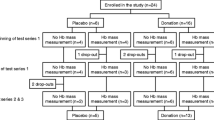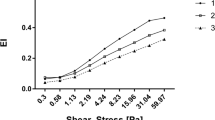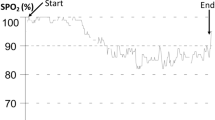Abstract
Disruption of the normal rheological properties of blood is considered an independent risk factor for cardiovascular disease and plays a significant role in the aetiology of atherothrombogenesis. The acute increase in whole blood viscosity may unfavourably affect the microcirculatory blood flow and oxygen delivery to the tissues. It is universally accepted that exercise and physical activity performed on a regular basis has health benefits. However, the effects of exercise on the rheological properties of blood have not received much research attention. Recent, limited evidence indicates that the viscosities of whole blood and plasma increase in response to a variety of exercise protocols. The increase in whole blood viscosity is mainly attributed to an increase in haematocrit and plasma viscosity, whereas the deformability and aggregability of red blood cells remain unaltered. The increases in plasma viscosity and haematocrit have been ascribed to exercise-induced haemoconcentration as a result of fluid transfer from the blood to the interstitial spaces. The haemorheological changes associated with strenuous exercise appear to be linked with enhanced oxidative stress and depletion of antioxidant capacity, and that may affect oxygen delivery and availability to the tissues.
Although significant advances have been made in many areas of exercise haematology, the long-term effects of endurance training on blood rheology have been very briefly examined and the exact effect of training has not as yet been determined. Available cross-sectional and longitudinal studies indicate that the blood of endurance athletes is more dilute and this has been attributed to an expansion of blood volume, particularly plasma volume as a result of training. The low haematocrit values in trained athletes represent a hydration condition rather than iron stores deficiency. It has been suggested that this hypervolaemia and blood dilutional effect of endurance training may be advantageous for heat dissipation and greater cardiac stroke volume and lower heart rates during exercise. Enhanced blood fluidity also facilitates oxygen delivery to the exercising muscles because of a reduced resistance to blood flow within the microcirculation. Furthermore, the increase in plasma volume may contribute to the body water pool and help offset dehydration. The influence of strength and power training on blood rheology is not known. The physiological mechanisms responsible for and the functional consequences of the haemorheological changes associated with exercise to a large extent remain speculative. The paradox of haematocrit and blood rheology in exercise and training warrants additional studies. Likewise, further investigations are necessary to determine the possible link between overtraining and blood rheological profiles.
Similar content being viewed by others
References
Lowe G, Rumley A, Norrie J, et al. Blood rheology, cardiovascular risk factors, and cardiovascular disease: the West of Scotland Coronary Prevention Study. Thromb Haemost 2000; 84: 553–8
Yarnell J, Baker IA, Sweetnam PM, et al. Fibrinogen, viscosity, and white blood cell count are major risk factors for ischaemic heart disease. The Caerphilly and Speedwell collaborative heart disease studies. Circulation 1991; 83: 835–44
Ajmani RS. Hypertension and hemorheology. Clin Hemorheol Microcirc 1997; 17: 397–420
Mchedlishvili G. Disturbed blood flow structuring as critical factor of hemorheological disorders in microcirculation. Clin Hemorheol Microcirc 1998; 19: 315–25
Cicco G, Pirrelli A. Red blood cells (RBC) deformability, RBC aggregability and tissue oxygenation in hypertension. Clin Hemorheol Microcirc 1999; 21: 169–77
Le Devehat C, Khodabandehlou T, Vimeux M. Relationship between hemorheological and microcirculatory abnormalities in diabetes mellitus. Diabete Metab 1994; 20: 401–4
Lowe GD. Blood rheology in vitro and in vivo. Baillieres Clin Haematol 1987; 3: 597–636
Letcher RL, Chien S, Pickering T, et al. Direct relationship between blood pressure and blood viscosity in normal hypertensive subjects: role of fibrinogen. Am J Med 1981; 70: 1195–202
El-Sayed MS. Effects of exercise on blood coagulation, fibrinolysis and platelet aggregation. Sports Med 1996; 22: 282–98
Toth K, Mezey B, Juricskay I, et al. Hemorheological and hemodynamical parameters in cardiac patients [abstract]. Perfusion 1991; 4: 448
Toth K, Habon T, Horvath I, et al. Hemorheological and hemodynamical parameters in patients with ischemic heart disease at rest and at peak exercise. Clin Hemorheol 1994; 14: 329–38
Letcher RL, Pickering TG, Chien S, et al. Effects of exercise on plasma viscosity in athletes and sedentary normal subjects. Clin Cardiol 1981; 4: 172–9
Dormandy JA. What is viscosity? Viscositas 1979; 1: 1–5
Rand PW, Barker N, Lacombe E. Effects of plasma viscosity and aggregation in whole blood viscosity. Am J Physiol 1970; 218: 115–23
Somer T. The viscosity of blood, plasma and serum in paraproteinemias. Acta Med Scand Suppl 1966; 456: 1–97
Chien S, Usami S, Taylor H, et al. The effects of haematocrit and plasma protein on human blood rheology at low shear rates. J Appl Physiol 1966; 21: 81–6
Chien S, Usami S, Dellenback RJ, et al. Shear dependent deformation of erythrocytes in rheology of human blood. Am J Physiol 1970; 219: 136–43
Lowe GD, Barbenel JC. Clinical blood rheology. In: Lowe G, editor. Plasma and blood viscosity. Boca Raton (FL): CRC Press, 1988: 1–44
Kon K, Maeda N, Suda T, et al. Protective effect of alpha tocopherol on the morphological and rheological changes of rat red cells. Acta Haematol 1983; 69: 111–6
Gillam I. Antioxidant, exercise and tissue damage. Excel 1990; 6: 11–9
Fahraeus S. Influence of the rouleaux formation of the erythrocytes on the rheology of the blood. Acta Med Scand 1958; 161: 151–5
Charm SE, Kurland GS. Blood flow and microcirculation. New York: John Wiley, 1974
El-Sayed MS. Fibrinogen levels and exercise: is there a relationship? Sports Med 1996; 21: 402–8
Lowe GD. Blood viscosity in vascular disease [dissertation]. Dundee: University of Dundee, 1984
El-Sayed MS, Davies B. A physical conditioning program does not alter fibrinogen concentration in young healthy subjects. Med Sci Sports Exerc 1995; 27: 485–9
Barbee JH. The effect of temperature on the relative viscosity of human blood. Biorheology 1973; 10: 1–5
Dintenfass L. Blood macrobiology-viscosity factors in blood flow, ischaemia and thrombosis. London: Butterworths, 1971
Neuhaus D, Gaehtgens P. Haemorrheology and long term exercise. Sports Med 1994; 18 (1): 10–21
Vandewalle H, Lacombe C, Lellevre JC, et al. Blood viscosity after 1-h submaximal exercise with and without drinking. Int J Sports Med 1988; 9: 104–7
Wood SC, Doyle MP, Appenzeller O. Effects of endurance training and long distance running on blood viscosity. Med Sci Sports Exerc 1991; 3: 1265–9
Lacombe C, Bucherer C, Lelievre CJ, et al. Effects hemorheologiques consecutifs a des exercises physiques controles sur ergocycle. J Mal Vasc 1991; 16: 279–82
Poortmans JR. Influence of physical exercise on protein in bio-logical fluids. In: Poortmans JR, editor. Biochemistry of exercise: medicine and sport. Vol. 3. Basel: Karger, 1969: 312–27
Fukuda T, Higaki S, Yamamoto K, et al. Red cell deformability and platelet function during exercise in patients with coronary artery disease. Biorheology 1981; 18: 282–3
Brun JF, Micallef JP, Orsetti A. Hemorheologic effects of light prolonged exercise. Clin Hemorheol 1994; 14: 807–18
Galea G, Davidson RJL. Hemorheology of marathon running. Int J Sports Med 1985; 6: 136–8
Neuhaus D, Behn C, Gaehtgens P. Haemorheology and exercise: intrinsic flow properties of blood in marathon running. Int J Sports Med 1992; 13: 506–11
Reinhart WH, Staubli M, Wherher Straub P. Impaired red cell filterability with elimination of old cells during a 100-km race. J Appl Physiol 1983; 54: 827–30
Gueguen-Duchesne M, Durand F, Beillot J, et al. Effect of maximal physical exercise on hemorheological parameters in top level sportsmen. Clin Hemorheol 1989; 9: 625–32
Giombi A, Burnard ED. Rheology of human foetal blood with reference to haematocrit, plasma viscosity, osmolality and pH. Biorheology 1970; 6: 315–28
Martin DG, Ferguson EW, Wigutoff S, et al. Blood viscosity responses to maximal exercise in endurance-trained and sedentary female subjects. J Appl Physiol 1985; 59: 348–53
Ernst E, Daburger L, Saradeth T. The kinetics of blood rheology during and after prolonged standardized exercise. Clin Hemorheol 1991; 11: 429–39
Brun J-F, Micallef P, Supparo I, et al. Effects of a standardised breakfast compared to fasting on the hemorheological responses to submaximal exercise. Clin Hemorheol 1995; 15: 213–20
Stone MH. Muscle conditioning and muscle injuries. Med Sci Sports Exerc 1990; 22: 457–62
Kraemer WJ. General adaptations to resistance and endurance training programs. In: Baechle TR, editor. Essentials of strength training and conditioning. Champaign (IL): Human Kinetics, 1994: 127–50
Ahmadizad S, El-Sayed MS. The acute effects of resistance exercise on the main determinants of blood rheology. J Sports Sci 2005; 23: 243–9
Brun J-F, Fons C, Supparo I, et al. Could exercise-induced increase in blood viscosity at high shear rate be entirely explained by haematocrit and plasma viscosity changes? Clin Hemorheol 1993; 13: 187–99
Brun J-F, Micallef JP, Supparo I, et al. Maximal oxygen uptake and lactate thresholds during exercise are related to blood viscosity and erythrocyte aggregation in professional football players. Clin Hemorheol 1995; 15: 201–12
Varlet-Marie E, Brun J-F. Reciprocal relationships between blood lactate and hemorheology in athletes: another hemorheologic paradox? Clin Hemorheol Microcirc 2004; 30: 31–7
Vicaut E, Hou X, Decuypere L, et al. Red blood cell aggregation and microcirculation in rat cremaster muscle. Int J Microcirc 1994; 14: 14–21
Brun J-F, Varlet-Marie E, Cassan D, et al. Blood fluidity is related to the ability to oxidize lipids at exercise. Clin Hemorheol Microcirc 2004; 30: 339–43
Nageswari K, Banerjee R, Gupte RV, et al. Effects of exercise on rheological and microcirculatory parameters. Clin Hemorheol Microcirc 2002; 23: 243–7
Brun JF, Boulot P, Micallef JL, et al. Physiological modifications of blood viscosity and red blood cell aggregation during labor. Clin Haemorheol 1995; 15: 13–24
Varlet-Marie E, Gaudard A, Mercier J, et al. Is feeling of heavy legs in overtrained athletes related to impaired hemorheology? Clin Hemorheol Microcirc 2003; 28: 151–9
Brun J-F. Exercise hemorheology as a three acts play with metabolic actors: is it of clinical relevance? Clin Hemorheol Microcirc 2002; 26: 158–74
Martins E, Silva J. Blood rheological adaptation to physical exercise. Rev Port Hemoreol 1988; 2: 63–7
Convertino VA, Keil LC, Bernauer EM, et al. Plasma volume, osmolality, vasopressin and rennin activity during graded exercise in man. J Appl Physiol 1981; 50: 123–8
Nosadova J. The changes in hematocrit, hemoglobin, plasma volume and proteins during exercise in man. Eur J Appl Physiol 1977; 36: 223–30
Sjogaard G, Adams RP, Saltin B. Water and iron shifts in skeletal muscle of humans with intense dynamic knee extension. Am J Physiol 1985; 248: R190–6
Stephenson LA, Kolka MA. Plasma volume during heat stress and exercise in women. Eur J Appl Physiol 1988; 57: 373–81
Bucherer C, Lacommbe C, Lellevre JC, et al. Effect of hydric intake on the rheological properties of blood after a submaximal exercise. Clin Hemorheol 1992; 12: 511–20
Sen CK. Antioxidants in exercise nutrition. Sports Med 2001; 31: 891–908
Rifkind JM, Ajmani RS, Heim J. Impaired hemorheology in the aged asoociated with oxidative stress. Adv Exp Med Biol 1997; 428: 7–13
Ajmani RS, Fleg JL, Demehin AA, et al. Oxidative stress and haemorheological changes induced by acute treadmill exercise. Clin Hemorheol Microcirc 2003; 28: 29–40
Ajmani RS, Metter EJ, Jayakumar R, et al. Hemodynamic changes during aging associated with cerebral blood flow and impaired cognitive function. Neurobiol Aging 2000; 21: 257–69
Temiz A, Baskurt OK, Pekcetin C, et al. Leukocyte activation, oxidant stress and red blood cell properties after acute, exhausting exercise in rats. Clin Hemorheol Microcirc 2002; 22: 253–9
Caillaud C, Connes P, Bouix D, et al. Does haemorheology explain the paradox of hypoxemia during exercise in elite athletes or thoroughbred horses? Clin Hemorheol Microcirc 2002; 26: 175–81
Connes P, Bouix D, Durand F, et al. Is hemoglobin desaturation related to blood viscosity during exercise? Int J Sports Med 2004; 25: 569–74
Muravyov AV, Graygin SV, Eremin NN, et al. The microrheological behaviour of young and old red blood cells in athletes. Clin Hemorheol Microcirc 2002; 26: 183–8
Peyreigne C, Bouix D, Micallef JP, et al. Exercise-induced growth hormone secretion and hemorheology during exercise in elite athletes. Clin Hemorheol 1998; 19: 169–76
Dintenfass L, Lake B. Exercise fitness, cardiac work and blood viscosity factors in patients and normals. Eur Surg Res 1976; 8: 174–84
Dintenfass L, Lake B. Blood viscosity factors in evaluation of submaximal work output and cardiac activity in men. Angiology 1977; 28: 788–98
Brun J-F, Sekkat M, Lagoueyte C, et al. Relationship between fitness and blood viscosity in untrained normal short children. Clin Hemorheol 1989; 9: 953–63
Ernst E, Matrai A, Aschenbrenner E, et al. Relationship between fitness and blood fluidity. Clin Hemorheol 1985; 5: 507–10
Ernst E, Matrai A, Aschenbrenner E. Blood rheology in athletes. J Sports Med 1985; 25: 207–10
Charm SE, Paz H, Kurland GS. Reduced plasma viscosity among joggers compared with non-joggers. Biorheology 1979; 16: 185–9
De Scalzi M, Cinelli P, de Leonardis V, et al. Response of some haemocoagulatory and haemorheological variables to maximal exercise in sedentary and active subjects. J Int Med Res 1987; 15: 361–7
Telford RD, Kovacic JC, Skinner SL, et al. Resting blood viscosity of elite rowers is related to performance. Eur J Appl Physiol 1994; 68: 470–6
Ernst E, Matrai A, Siepmann P, et al. Blood rheology in former and active athletes. J Sports Med 1987; 27: 373–5
Gurcan N, Erbas D, Ergen E, et al. Changes in blood haemorheological parameters after submaximal exercise in trained and untrained subjects. Physiol Res 1998; 47: 23–7
Gaudard A, Varlet-Marie E, Bressolle F, et al. Hemorheological correlates of fitness and unfitness in athletes: moving beyond the apparent ‘paradox of haematocrit’. Clin Hemorheol Microcirc 2003; 28: 161–73
Fendler K, Matrai A. Changes in blood viscosity in adolescent swimmers and adult weight-lifters. Hung Rev Sports Med 1980; 21: 199–203
Pretolani E, Zoli I, Battistini G, et al. Haemorheological changes during maximal stress test in athletes [abstract]. Clin Hemorheol 1985; 5: 654
Khaled S, Brun J-F, Wagner A, et al. Increased blood viscosity in iron-depleted elite athletes. Clin Hemorheol 1998; 18: 309–18
Smith JA. Exercise training and red blood cell turnover. Sports Med 1995; 19 (1): 9–31
Ernst E, Schmid M, Matrai A. Inter-individual changes of hemorheological and other variables by regular exercise. J Sports Cardiol 1985; 2: 50–4
Lovlin RE, Sewchand LS, Beck JS, et al. Effects of exercise and conditioning on properties of red blood cells significant for blood flow. Proceedings of the Third International Congress of Biorheology. La Jolla (CA): IOS Press, 1978: 226
Green HJ, Sutton JR, Coates G, et al. Response of red cell and plasma volume to prolonged training in humans. J Appl Physiol 1991; 70: 1810–5
Mairbaurl H, Humpeler E, Schwaberger G, et al. Training-dependent change of red cell density and erythrocytic oxygen transport. J Appl Physiol 1983; 55: 1403–7
Convertino VA, Bloomfield SA, Greenleaf JE. An overview of the issues: physiological effects of bed rest and restricted physical activity. Med Sci Sports Exerc 1997; 29: 187–90
Brotherhood J, Brozovic B, Pugh LGC. Haematological status of middle and long distance runners. Clin Sci Mol Med 1975; 48: 139–45
Remes K. Effect of long-term physical training on total red cell volume. Scand J Clin Lab Invest 1979; 39: 311–9
Gallasch G, Diehm C, Dorfer C, et al. Effects of physical training on blood flow properties in patients with intermittent clsudications. Klin Wochenschr 1985; 63: 554–9
Dumortier M, Perez-Martin A, Pierrisnard E, et al. Regular exercise (3×45 min/week) decreases plasma viscosity in sedentary obese, insulin resistant patients parallel to an improvement in fitness and a shift in substrate oxidation balance. Clin Hemorheol Microcirc 2002; 26: 219–29
Scheen AJ. Pharma-clinics: doping with erythropoietin or the misuse of therapeutic advances. Rev Med Liege 1998; 53: 499–502
Convertino V. Blood volume: its adaptation to endurance training. Med Sci Sports Exerc 1991; 23: 1338–48
Hagberg JM, Goldberg AP, Lakatta L, et al. Expanded blood volumes contribute to the increased cardiovascular performance of endurance-trained older men. J Appl Physiol 1998; 85: 484–9
Brun J-F, Bouchahda C, Chaze D, et al. The paradox of haematocrit in exercise physiology: which is the ‘normal’ range from an hemorheologist’s viewpoint? Clin Hemorheol Microcirc 2000; 22: 287–303
Ernst E, Matrai A, Aschenbrenner E, et al. Relationship between fitness and blood fluidity. Clin Hemorheol Microcirc 1985; 5: 507–10
Nagao N, Imai Y, Arie J, et al. The Kaike triatletes’ haematocrit values with relation to their competition results. J Sports Med Physical Fitness 1992; 32: 201–5
Tell GS, Vellar OD. Physical fitness, physical activity, and cardiovascular disease risk factors in adolescents: the Oslo Youth study. Prev Med 1988; 17: 12–24
Sawka MN, Young AJ, Pandolf KB, et al. Erythrocyte, plasma and blood volume of healthy young men. Med Sci Sports Exerc 1992; 24: 447–53
Connes P, Perrey S, Varray A, et al. Faster oxygen kinetics at the onset of submaximal cycling exercise following 4 weeks recombinant human erythropoietin (r-HuEPO) treatment. Pflugers Arch 2003; 447: 231–8
Lehmann M, Foster C, Keul J. Overtraining in endurance athletes: a brief overview. Med Sci Sports Exerc 1993; 25: 854–62
Aissa-Benhaddad A, Bouix D, Khald S, et al. Early hemorheologic aspects of overtraining in elite athletes. Clin Hemorheol Microcirc 1999; 20: 117–25
Fisher AB, Chien S, Barakat AI, et al. Endothelial cellular response to altered shear stress. Am J Physiol Lung Cell Mol Phys 2001; 281: 529–33
Bor-Kucukatay M, Yalcin O, Gokalp O, et al. Red blood cell rheological alterations in hypertension induced by chronic inhibition of nitric oxide synthesis in rats. Clin Hemorheol Microcirc 2000; 22: 267–75
Melnikov AA, Alexander D, Bagrakova VV. Relationships between von Willebrand factor and hemorheology in sportsmen. Clin Hemorheol Microcirc 2003; 29: 19–24
Tsai AG, Friesenecker B, McCarthy M, et al. Plasma viscosity regulates capillary perfusion during extreme haemodilution in hamster skinfold model. Am J Physiol Heart Circ Physiol 1998; 275: H2170–80
El-Sayed MS. Effects of exercise and training on blood rheology. Sports Med 1998; 26: 281–92
Acknowledgements
No sources of funding were used to assist in the preparation of this review article. In addition, the authors believe that there are no potential conflicts of interest that are directly relevant to the content of this review.
Author information
Authors and Affiliations
Corresponding author
Rights and permissions
About this article
Cite this article
El-Sayed, M.S., Ali, N. & Ali, Z.ES. Haemorheology in Exercise and Training. Sports Med 35, 649–670 (2005). https://doi.org/10.2165/00007256-200535080-00001
Published:
Issue Date:
DOI: https://doi.org/10.2165/00007256-200535080-00001




